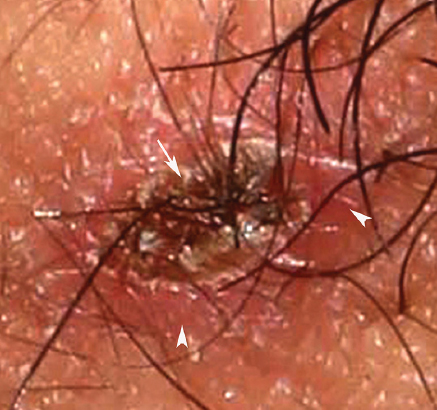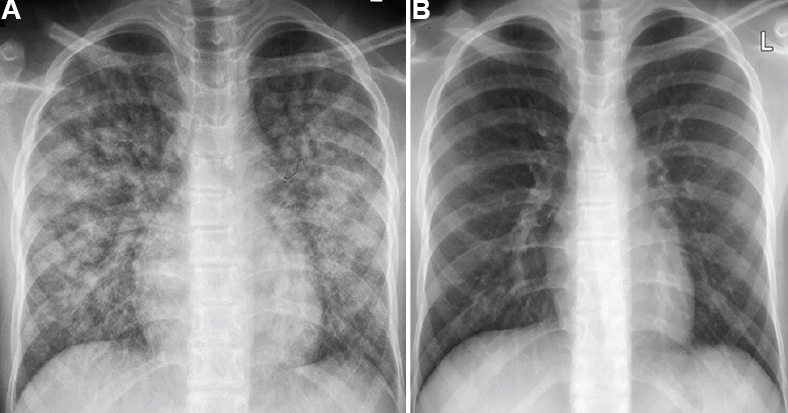Translate this page into:
Acute respiratory distress syndrome in scrub typhus
*For correspondence: gawaribacchi@gmail.com
-
Received: ,
This is an open access journal, and articles are distributed under the terms of the Creative Commons Attribution-NonCommercial-ShareAlike 4.0 License, which allows others to remix, tweak, and build upon the work non-commercially, as long as appropriate credit is given and the new creations are licensed under the identical terms.
This article was originally published by Wolters Kluwer - Medknow and was migrated to Scientific Scholar after the change of Publisher.
A 17 yr old male child† admitted with fever and rapidly progressive dyspnoea for 10 days in the Emergency department of Postgraduate Institute of Medical Education & Research, Chandigarh, India, in September 2019. At admission, his oxygen saturation was 84 per cent on room air. Physical examination revealed a black crusted eschar surrounded by an erythematous halo in the right axilla (Fig. 1). Bilateral diffuse lung crackles and mild splenomegaly were present on systemic examination. The chest radiograph showed bilateral lung infiltrates (Fig. 2A). Arterial blood gas analysis revealed a PaO2:FiO2 ratio of 190. A nested PCR of the gene encoding the 56-kDa antigen of the Gilliam strain of Orientia tsutsugamushi in the blood was positive. A diagnosis of scrub typhus with acute respiratory distress syndrome (ARDS) was made. The patient improved with antibiotics and mechanical ventilation for 72 h. A follow up radiograph at three weeks was normal (Fig. 2B).

- Black crusted eschar surrounded by an erythematous halo in the right axilla, a pathognomonic finding in the scrub typhus (arrows head).

- (A) Chest radiograph showing bilateral lung infiltrates consistent with acute respiratory distress syndrome. (B) A normal radiograph at a three-week follow up.
A careful search for eschar is warranted in patients with acute undifferentiated febrile illness, as it makes a definite bedside diagnosis of scrub typhus.
Conflicts of Interest: None.





